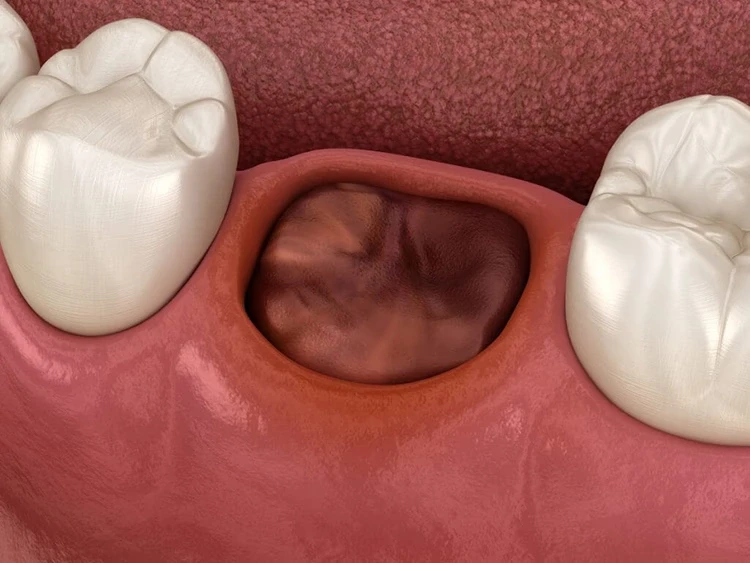
Oct 16, 2025
How to Avoid Dry Socket After Tooth Extraction
By Dr. Leslie Patrick, DMD
You've just been through an emergency tooth extraction, and your focus is now on a smooth and comfortable recovery. Although the procedure itself is complete, the first few days of healing are crucial. The most common and painful complication patients worry about is a "dry socket."
The great news is that a dry socket is almost entirely preventable. At Smyrna Dental Studio, we believe that a well-informed patient has the best and most comfortable healing experience. This guide will provide you with a clear, simple set of rules for your tooth extraction aftercare to help you avoid this complication and heal quickly.

What Exactly Is a Dry Socket?
To understand how to prevent a dry socket, it helps to know what it is. After a tooth is removed, a blood clot forms in the empty socket. This blood clot is incredibly important. It acts as a natural bandage that:
Protects the underlying bone and nerve endings.
Provides the foundation for new bone and soft tissue to grow.
A dry socket occurs when this blood clot is dislodged or dissolves too early, leaving the sensitive bone and nerves exposed to air, food, and fluids. This exposure is what causes the intense, throbbing pain associated with the condition.
The Golden Rule of Prevention: Protect the Blood Clot
Every aftercare instruction we provide is designed around one simple goal: to keep the protective blood clot securely in place while your body heals.
Your "Do Not Do" List: The Most Critical Rules for the First 3-5 Days
1. Do NOT Smoke, Vape, or Use Tobacco
This is the single biggest risk factor for developing a dry socket. The chemicals in nicotine restrict blood flow and impair healing, and the sucking motion of inhaling can easily dislodge the blood clot. You must avoid all tobacco and nicotine products for as long as possible after your extraction.
2. Do NOT Use a Straw
The suction created when you drink through a straw is powerful enough to pull the blood clot right out of the socket. Drink directly from a glass for at least one whole week.
3. Do NOT Rinse Vigorously or Spit
For the first 24 hours, refrain from rinsing your mouth. After that, you can begin gentle warm saltwater rinses, but let the water flow out of your mouth into the sink. Do not engage in forceful spitting or swishing.
4. Do NOT Eat Hard, Crunchy, or Small Foods
Stick to a soft food diet. Small, hard foods like nuts, seeds, or popcorn kernels can get lodged in the empty socket, irritating the site and dislodging the clot.
5. Do NOT Engage in Strenuous Activity
For the first 24 to 48 hours, avoid heavy lifting and intense exercise. This can increase your blood pressure and may cause the extraction site to start bleeding again.
FAQs: Your Dry Socket Questions Answered
Q1: How do I know if I have a dry socket? The site is a little sore. Normal post-operative soreness should peak and then steadily improve after the first couple of days. The pain from a dry socket is different. It is a severe, throbbing, deep pain that typically starts 2-4 days after the extraction and gets progressively worse. You may also notice a bad taste or odor and see that the socket looks empty.
Q2: How long am I at risk of getting a dry socket? The highest risk period is the first 3 to 5 days after your emergency tooth extraction, as this is when the blood clot is most fragile and susceptible to disruption. After a week, the risk decreases significantly as the tissues begin to heal.
Q3: Is a dry socket dangerous? While extremely painful, a dry socket is not typically a dangerous or life-threatening condition. However, it requires professional treatment to resolve the pain and ensure the site heals properly without infection.
Q4: I think I have a dry socket. What should I do? Call our Smyrna office immediately. Do not try to "tough it out." We will schedule an appointment for you. Treatment is simple and provides fast relief. We will gently clean the socket and place a special medicated dressing inside, which soothes the exposed bone and nerve almost immediately.
A Smooth Recovery is in Your Control
A dry socket is a painful but highly preventable complication. By following these simple but crucial aftercare instructions, you are taking control of your healing process and setting yourself up for a smooth, comfortable, and fast recovery.
Your partnership in the healing process is crucial to achieving a great outcome. Our team at Smyrna Dental Studio is here to support you every step of the way.
If you are recovering from a tooth extraction and have any questions or are experiencing severe pain, please do not hesitate to call our Smyrna office. We are always here to help.





